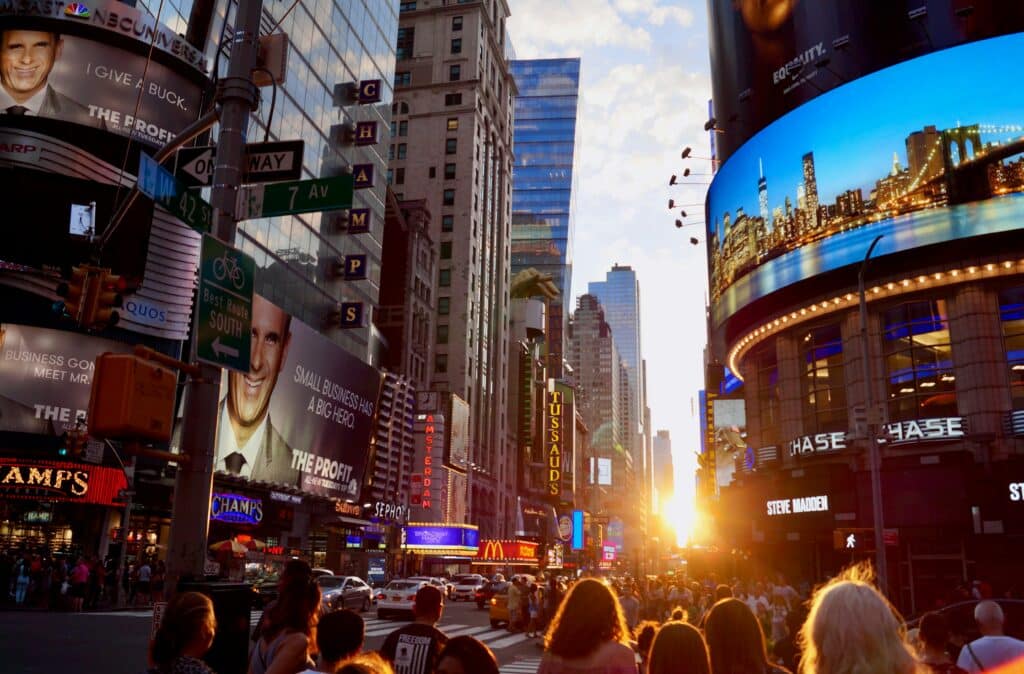Digital signage has transformed the advertising landscape, offering businesses a flexible, dynamic, and measurable way to reach audiences. Whether you’re a retail brand, a hospitality provider, or an internal communications manager, using digital advertising screens strategically can drive engagement and deliver impressive returns. In this blog, we explore how to effectively use advertising with digital signage, from targeting to measurement, and how it compares to traditional methods.

Targeting the Right Audience
One of the most powerful aspects of advertising with digital signage is its ability to target the right audience at the right time. Unlike static signage, commercial digital signage displays allow tailored content based on demographics, location, and even time of day.
For instance, a digital advertising screen in a shopping centre can show retail ads during peak shopping hours and switch to entertainment promotions in the evening. This level of flexibility allows businesses to speak directly to their core audience when it matters most.
Many advanced signage platforms now offer integration with data analytics tools, enabling more accurate profiling. Businesses can enhance the effectiveness of their messaging by utilising customer flow data to display content that caters to the interests and needs of a specific audience.
Content Strategies for Maximum Impact
To truly maximise the effectiveness of your digital advertising signs, having a content strategy is key. Here’s how to ensure the content that you’re making is driving attention and action:
Keep it dynamic: Motion graphics and video are significantly more impactful in grabbing attention. Use animation to highlight calls to action or emphasise key messages.
Localise and personalise: Tailor content to the specific location or audience. A quick-service restaurant chain, for example, can display different menu promotions across regions or change offers based on the time of day.
Keep it concise: Audiences often have limited time to digest your message, especially in high-footfall areas. Use bold visuals and attention-grabbing copy to communicate effectively.
Leverage social proof: Displaying user-generated content, reviews, or social media feeds can help in building trust and increasing conversion rates.
By using these strategies, advertisers can maximise the impact of their commercial digital signage displays, turning passive viewers into active customers.
Measuring Campaign Success
Unlike traditional print or static advertising, digital advertising signs provide measurable outcomes. With built-in analytics, businesses can track impressions, engagement rates, dwell time, and even conversions.
Here are key metrics to consider:
- Impressions: How many people viewed the content on the digital screen?
- Dwell time: How long did they stay in front of your digital signage?
- Engagements: Did they take any action (e.g., did they scan a QR code, or visit a URL)?
- Sales impact: Was there a noticeable lift in sales during the campaign period?
CRM/POS integration with digital signage can enhance campaigns by enabling data-driven decisions based on customer behaviour and preferences. Businesses can tailor their content to specific customer segments and adjust promotions based on real-time sales data. A/B testing helps to optimise your content, maximising the impact and ROI of digital signage.
Comparing Traditional vs. Digital Advertising Methods
Point #1: Flexibility and Speed
Traditional advertising methods, such as posters or billboards, require physical printing and installation, which can be time-consuming and costly. Digital advertising screens, on the other hand, offer immediate updates. Campaigns can be launched or modified in real time, allowing for instantaneous responses to market trends or customer feedback.
Point #2: Cost-Effectiveness Over Time
While the initial cost of purchasing commercial digital signage displays may seem high, it is an incredibly cost-effective investment over time. Once installed, content changes incur little to no additional cost, unlike recurring print runs. Moreover, the ability to run multiple campaigns on the same screen increases ROI.
Point #3: Audience Engagement
Traditional media is static and, because of this, is often ignored. In contrast, advertising with digital signage is visually engaging, interactive, and adaptable. Whether it’s a touchscreen display, a motion-sensing kiosk, or a video wall, digital signage grabs attention and retains it for longer, making it a more effective medium for modern audiences.
Final Thoughts
In an increasingly competitive marketplace, businesses need modern tools that offer both creativity, accountability and versatility. Digital advertising screens offer the flexibility, visual impact, and data-driven insights that traditional methods can’t deliver in the same way. By understanding your audience, creating targeted content, and tracking campaign performance, advertising with digital signage becomes not just a smart option but a necessity for impactful and measurable campaign results.
If you’re looking to elevate your advertising strategy, investing in commercial digital signage displays could be one of the most powerful moves you can make. Digital signage delivers targeted, dynamic content with real-time results, making it not just a modern alternative but a powerful way to boost engagement, build brand awareness, and stay competitive. Contact us to hear more!
